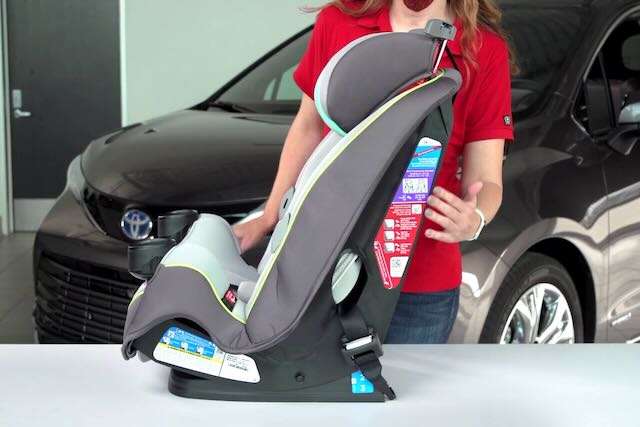Installing a car seat in a Toyota Sienna Hybrid can be frustrating, but it doesn’t have to be. The key is following the instructions carefully and being patient. If you do this, you’ll get it right eventually!
Why is it important to put the car seat in your car properly?
If you don’t, your baby might not be safe. Your baby will want to know that you are careful with him or her.
There are different types of car seats. They all have specific instructions for installing them in your vehicle. Some require you to use a seat belt instead of the lower LATCH anchors.
Please consult your child safety seat’s owner’s manual, or if installed improperly, it will not be safe. Read on for specific information about how to install a car seat in your Toyota Sienna.
How is the Sienna for child safety?
The Advanced Airbag System, which is standard on every 2022 Toyota Sienna, includes ten airbags. Airbags are placed in the second row, with airbags mounted on outboard seat edges and a line of side curtain airbags. For increased safety on the road, the Sienna also includes Blind Spot Monitor with Rear Cross-Traffic Alert, which gives greater self-assurance.
The Sienna has 5 LATCH points, as well as five for the optional tethers. These accessories (Lower Anchors and Tethers for Children) provide locations to attach kid seats to keep smaller ones secure. Rear-Seat Reminders are available on each model, which alerts drivers to sleeping kids in the backseat.
Always check the instruction manual first!
For specific information on how to properly harness your youngster, including brand and model-specific car seat installation instructions. Please follow all directions in the user manual and secure the system with the child restraint device.
It’s important to double-check that your child’s height and weight are within the car seat manufacturer’s guidelines for Forward-Facing installation before you begin. This data may be found in the owner’s manual as well as on the labels on the side of the car seat.
Attaching the child seat
Start by removing any attachments or trash from the seat. Use either forward-facing or backward-facing mode, and ensure that all accessible features such as the reclined angle are set for forward-facing usage to provide comfort for your child. Check the user manual and the child restraint system for specific instructions on how to do this.
Place the child seat on the vehicle seat and make sure the tether strap is not caught behind it. If there’s a space between your back and the back of the seat, adjust it until the child restraint fits comfortably against your back.
Locate the forward-facing belt path on the child seat, and pull the buckle end of the seatbelt through it. Make sure there is no twisting in the belt.
Fully extend both shoulder belts before putting it in lock mode by fully extending them and allowing them to relax. The shoulder belt may make a clicking noise as it retracts.
Allow the child restraint system to descend into the seat until it is securely fastened, then press down on it gently.
Please note that when in lock mode, the belt cannot be extended.
Ensure the belt is tightly fastened
When you’re certain that the belt is securely fastened, use a finger to gently tug on the shoulder strap to ensure it’s locked.
When grasping the kid restraint near the belt path, ensure there is less than one inch of side-to-side and front-to-back movement. If there is more than an inch of motion, tighten the vehicle’s belt even further.
Finally, attach the child restraint tether strap to the back of the vehicle seat’s tether anchor.
The tether may be different on your child’s seat model
For straight-type tethers, The anchor should be placed in the rear of the car and cinched around the seats. The tether strap should be routed beneath the head restraint connected to the anchor and tightened.
For V-shaped tethers, the straps may fall on either side of the head restraint.
At this point, you should have installed your child restraint!
If you have any questions or problems with the installation of a specific car seat, please contact the vehicle’s owner’s handbook and the car seat’s instructions for additional information.






